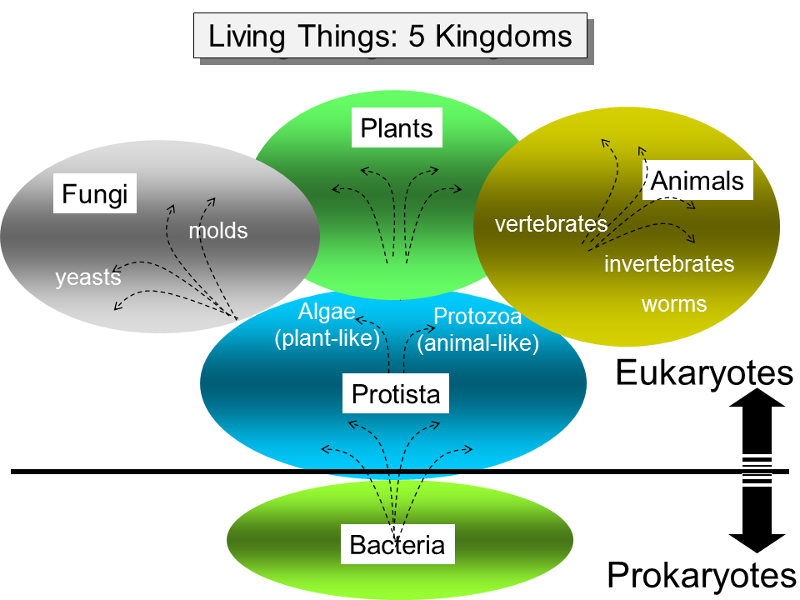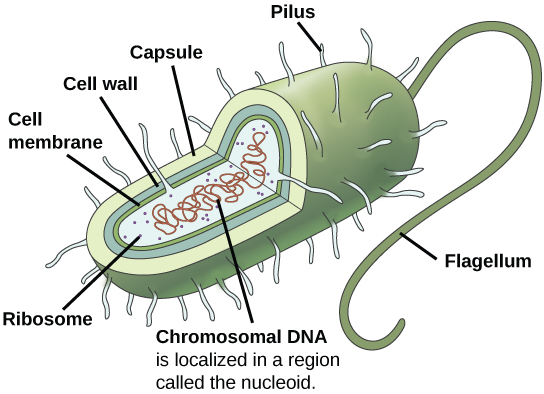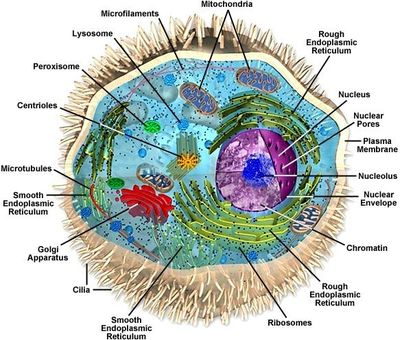An Overview of Infectious Agents
The Five Kingdoms of Living Things
Biologists generally classify living organisms into one of the five kingdoms illustrated here. Bacteria are the most primitive and likely represent the earliest living organisms, from which the protista and other kingdoms are likely to have evolved. The overlap of the kingdoms in this figure is intentional, because, given the evolution of increasingly complex and diverse species, there are no clear-cut dividing lines, and classification has sometimes been ambiguous. Fungi, for example, were once classified with plants, but some of their structural characteristics are quite distinct from those of plants, and they are now classified in their own kingdom.

Species from all five of the kingdoms have the potential to influence human health, either positively or negatively.
While natural selection implies competition among and within species, we are increasingly aware that there is a strong interdependence among species. For example, most bacteria are non-pathogenic and live on the inner and outer surfaces of our bodies in staggeringly large numbers. These "normal flora" actually outnumber the cells in our body, and they provide many benefits. A key benefit is that by living on our skin and on the epithelial lining of our respiratory, digestive, and uro-genital tract, these usually harmless bacteria prevent pathogenic species from gaining a foothold.
Prokaryotes versus Eukaryotes
The bacteria are the oldest and simplest living organisms, and all of the bacteria are "prokaryotes ," meaning that they do not have a true membrane-bound nucleus as eukaryotes
," meaning that they do not have a true membrane-bound nucleus as eukaryotes do. [Prokaryote is derived from Greek,meaning "before nucleus"; eukaryote means "true nucleus."]
do. [Prokaryote is derived from Greek,meaning "before nucleus"; eukaryote means "true nucleus."]
The figures and tables below provide a comparison of prokaryotic versus eukaryotic cells.
- The prokaryotic cell is much simpler than the eukaryotic cell. The prokaryote has a cell membrane and a cell wall, and it may have an exterior capsule. The gummy capsule, composed of proteins and polysaccharides, enables bacteria to attach to surfaces and to resist drying out. Prokaryotes may also have pili; a pilus is a hairlike projection from the cell membrane that aids in attachment. A specialized sex pilus can form a tube like bridge between two prokaryotes to enable transfer of plasmids (extrachromosomal genes). Prokaryotes tend to have a single chromosome composed of DNA, sometimes referred to as a "nucleoid" because there is no nuclear membrane surrounding it. There are also ribosomes that are free-floating within the cytoplasm. Some prokaryotes have simple whip-like flagella that enable them to be motile in a fluid environment.
- Eukaryotic cells are also enclosed by a cell membrane, but they also have an elaborate network of internal membranes that provide for a much more complex array of functions. Chromosomes are enclosed in a nuclear membrane that is contiguous with the endoplasmic reticulum which is studded with ribosomes where protein synthesis takes place. Post-translational processing of newly synthesized proteins can begin in the endoplasmic reticulum, after which proteins can be transported to the Golgi apparatus, another series of plate-like membranes, where additional processing of proteins takes places. The mitochondria are membrane-bound structures that house an array of enzymes that metabolize cellular fuel to produce adenosine triphosphate (ATP), the cellular energy source for many many processes. Some eukaryotes have a flagellum, which has a more complex structure than that of prokaryotes.
|
Prokaryote
Source: https://www.boundless.com/biology/textbooks/boundless-biology-textbook/prokaryotes-bacteria-and-archaea-22/structure-of-prokaryotes-141/basic-structures-of-prokaryotic-cells-562-11775/ |
Eukaryote
Source: http://dinopedia.wikia.com/wiki/Eukaryote |
|
Prokaryotes |
Eukaryotes |
|---|---|
|
Generally smaller (0.2-2.0 μm) |
Generally 10-100 μm |
|
No nuclear membrane. There is generally a single circular chromosome composed of DNA |
Have a true nucleus, consisting of nuclear membrane & nucleoli. Eukaryotes have multiple linear chromosomes. |
|
No membrane-enclosed organelles. |
Membrane-enclosed organelles include lysosomes, Golgi complex, endoplasmic reticulum, mitochondria & chloroplasts |
|
Flagella are simple, consisting of just two protein building blocks |
Flagella are complex and are composed of multiple microtubules |
|
Present as a capsule or slime layer |
Present in some cells that lack a cell wall |
|
Frequently have a cell wall and a cell cell membrane. The cell membrane lacks carbohydrates and generally lacks sterols |
Usually do not have a cell wall. The cell membrane does have sterols and carbohydrates that serve as receptors. |
|
Lack a cytosketeton |
Have a cytoskeleton and can perform cytoplasmic streaming |
|
Binary fission |
Mitosis |






